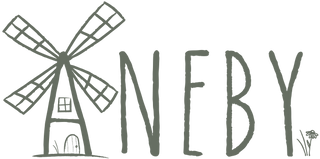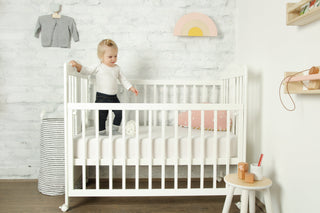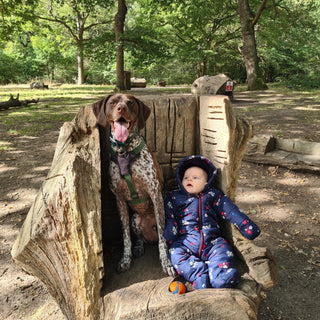How much does it cost?
If you're reading this because you want to know how much it cost us to start our children’s clothing business, I’ll keep it simple. By the time we launched in April 2024, we had spent £50,000 on the full collection.
The breakdown is as follows: full collection and shipping to the UK £35,000, marketing £5,000, website £3,500, photography £2,000, storage and fulfilment £1,500, and branding £1,000. This was on budget.
This was a big amount for us. We had two small children under two, and a 20-year mortgage. There was the obvious temptation to use the money to pay off some of the mortgage or invest in a rental property. But we believed we could create something special. That belief, and the excitement we felt, helped us make the decision.
Why E-commerce?
Our e-commerce journey began in 2020 when demand for face masks suddenly exploded. Steph was working in the fashion industry and managed to design and sew a prototype in a few hours. Fast forward 18 months, and she had quit her job. We were selling more face masks and reusable cotton pads on Etsy than we could keep up with.
We were often working until 4am, and then I’d be up again at 9am for my day job, completely exhausted. But the “cha-ching” sound from a sale became addictive
We would pack and post every order ourselves and race to the Royal Mail depot for the final 6pm collection. After a while, we moved from masks into eco-accessories: handmade tote bags, reusable grocery bags, and reusable makeup pads with a clever finger strap.
But eventually, we burned out. No matter how hard we worked, it didn’t add up. Making everything by hand took too long, and Etsy fees could be as high as 30%.
The creation of Aneby and our budget
Once we decided to focus on children’s clothing, we jumped in fully. We registered the name “Aneby”, and even though we had a small legal challenge from a retailer in Italy, it was all sorted fairly easily.
Steph worked on the designs for six months. In the end, we had 39 products, and about half of them came in three colour options.
We planned to sell the more complex items (like the boilersuit and overalls) for £30 to £40, and the rest of the range for £20 to £30. This matched prices from other children’s brands.
Thanks to Steph’s industry background, we knew the cost to make each item should be in the region of £4 to £7 based on complexity.
We expected to sell around 8,000 garments at a 70% margin, giving us a target revenue of £150,000 and a profit of £100,000.
Finding our production partner
Finding the right factory was one of the most important parts of the whole journey.
We wanted to make everything in the UK, but quotes were as high as £20 per garment, which just wasn’t possible. We looked at factories in Europe too, but they were also too expensive.
That led us to explore options in India and Pakistan. We were nervous, mainly because we wanted the brand to be ethical and eco-friendly. Fair wages and sustainable materials really mattered to us.
We emailed hundreds of manufacturers we found on Google. Eventually, we found a company in India that used organic fabrics and matched our values.
We had a few video calls and sent them tech packs that Steph had made (you can get a free copy of our tech pack here). They sent back samples. Then we discussed pricing, and it became clear that the cost would be much cheaper if we ordered all 8,000 units up front. We thought about starting with just 500 or 1,000 garments, but shipping and insurance alone cost thousands. So bigger orders made more sense.
The full cost to produce and ship 8,000 garments to the UK was about £35,000. It was scary. Sending that much money to a factory we’d never visited felt risky. But we only agreed to pay once we had proof: videos showing our products made and packed.
The Launch
In April 2024, we launched Aneby, and the response was amazing. Family, friends, and past customers from Etsy visited the site and placed orders. We also did a decent job promoting the launch on social media where we already had a few thousand followers.
But after a few weeks, things slowed down. Website traffic dropped by 90%, and we were getting just 1–2 orders a week. It was scary.
We ran a few big discounts (up to 50%) to try and boost sales. It helped a bit, but it wasn’t enough. After a few months, we dropped our prices permanently, hoping it would bring in more traffic, especially since we had £500 per month in storage and fulfilment costs.
But it didn’t work. Traffic had fallen off a cliff, which meant we had to face the world of digital marketing.
Digital Marketing and Paid Ads
We knew marketing was important. So we invested in professional photography, wrote strong product descriptions, and studied SEO (search engine optimisation).
We followed every tip:
-
Adding ALT text for images
-
Writing META descriptions
-
Naming product URLs and images using keywords
-
Trying to build backlinks (other websites linking to ours)
- Adding Schema mark-up to help Google understand how products
-
Removing duplicate URL's where products show both /product or /collection
But with a young family, it was hard to make progress quickly. So we tried Google Ads. We were told to set a high daily budget while Google “learns” how to match our site with buyers.
We spent nearly £2,000 and made just £500 in sales. That was a hard lesson. Maybe it would have worked long-term, but we didn’t have the budget to keep testing it. Creating campaigns was also more complicated than we thought, with lots of “funnels” and tests needed to work out what actually sells.
Working with freelancers: what we learnt
By this point, we knew we needed help with digital marketing. We'd already had good experiences working with freelancers for photography and web design, so it felt natural to try the same approach for SEO and driving traffic to the website.
We weren’t looking for guaranteed sales — no one credible will ever promise that. But we did want someone to help improve our search rankings and increase the number of people visiting our site. The hope was that better traffic would lead to better sales.
We posted a job on Upwork and got over 100 applications. Most were from India and Pakistan and charged between $7–10/hour. UK-based freelancers tended to cost $50–75/hour.
In the end, we chose someone in India. She was friendly, responsive and confident in her approach. We worked together for two months, spending around $100 a week.
But it didn’t work out. Here’s what we learnt:
- Clear communication is essential. Even though her English was good, we often felt misunderstood or out of sync on priorities.
- Low cost often means low quality. Her strategy was to write AI-generated blogs and publish them on random websites with high domain authority — but they were completely unrelated to our niche, and many were in Russian or Chinese. When we questioned it, she reassured us it was a good approach. It wasn’t.
- Technical changes can break your site. At one point, her SEO tweaks caused images to vanish from our homepage, and mobile layouts broke completely. Fixes took days, and we weren’t always sure whether we were being billed for the time it took to fix things she’d broken.
- It wasn’t as personal as it seemed. Although it was pitched as working directly with a freelancer, it became obvious she was part of a larger agency and juggling lots of other clients. We were never the priority.
That experience taught us a lot.
We’re now working with a UK-based freelancer for 5–10 hours a month at $50/hour. Communication is clear, tasks are agreed in advance, and we’re seeing steady results.
Freelancers can be a brilliant option for small businesses. You avoid the cost and commitment of hiring full-time staff, and you can bring in expertise as and when you need it. But take your time. Ask questions. Be clear on what you’re getting and what success looks like.
And remember, cheapest is rarely best.
Wholesale and a new strategy
How Faire helped save our business.
This is where Faire came in – an online wholesale marketplace.
Here’s how it works:
-
Retailers buy from us at 50% off.
-
Faire takes a 25% cut, which means we receive 37.5% for each sale
-
We set a £500 minimum order to make it worthwhile.
This move was a game-changer for our cash flow. We accepted that our dream of £100k profit wasn’t realistic right now. It became about survival – and keeping the business alive.
Faire helped us:
-
Sell stock quickly
-
Reach independent boutiques across the UK
-
Get valuable exposure and repeat wholesale orders
And best of all – it freed us up to focus on what’s next.
Is it worth it?
The long game is starting to pay off.
E-commerce takes time.
Most new businesses won’t rank on Google straight away, so getting seen is a challenge. That’s why we’ve started focusing more on:
-
Blogging to improve SEO
-
Building our mailing list
-
Collaborating with other small brands
After 14 months, we’re finally seeing daily sales. We’re learning what works, getting smarter with our marketing, and building something more sustainable.
We’re now working with influencers, running giveaways, tweaking our product photos, and sending out email newsletters that are actually generating sales.
Our second collection is also on the way soon, and our understanding of how online business works has grown massively.
If we could go back two years and do it all again, even knowing how tough it would be, we absolutely would.











